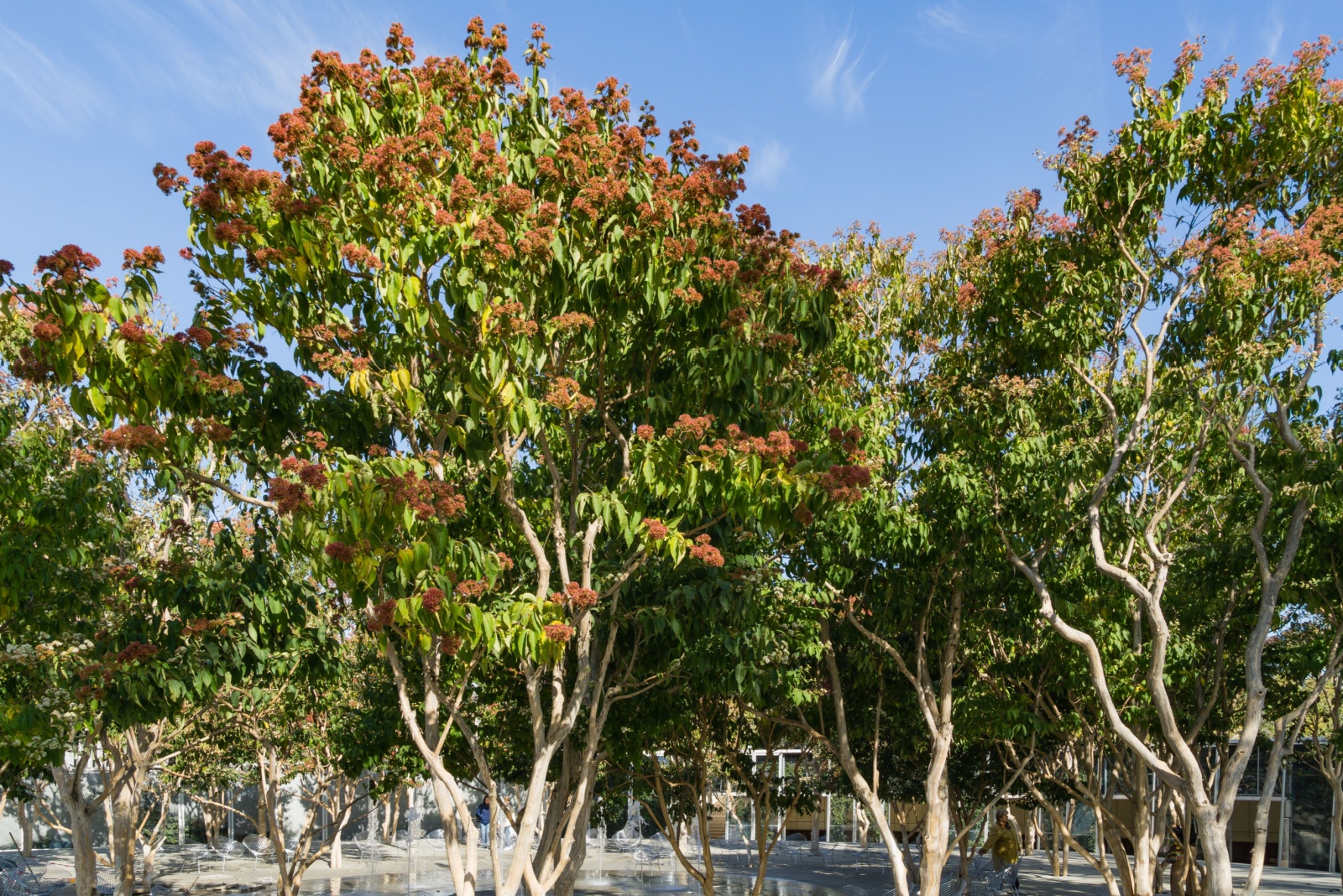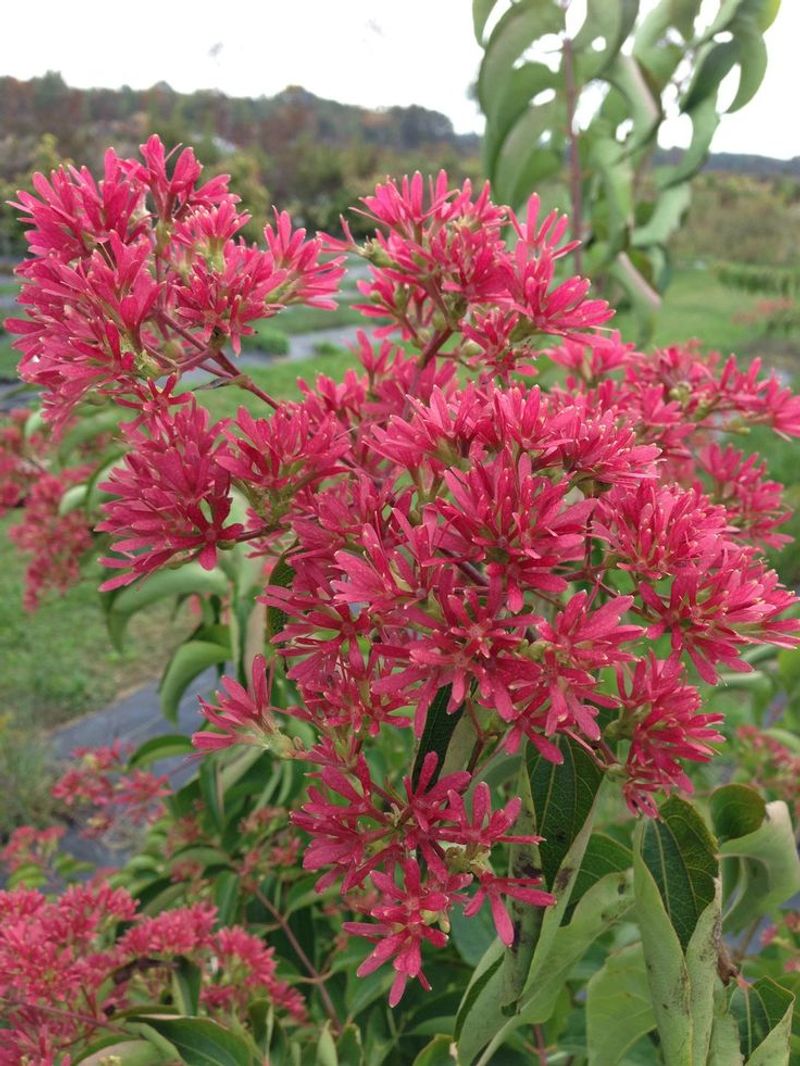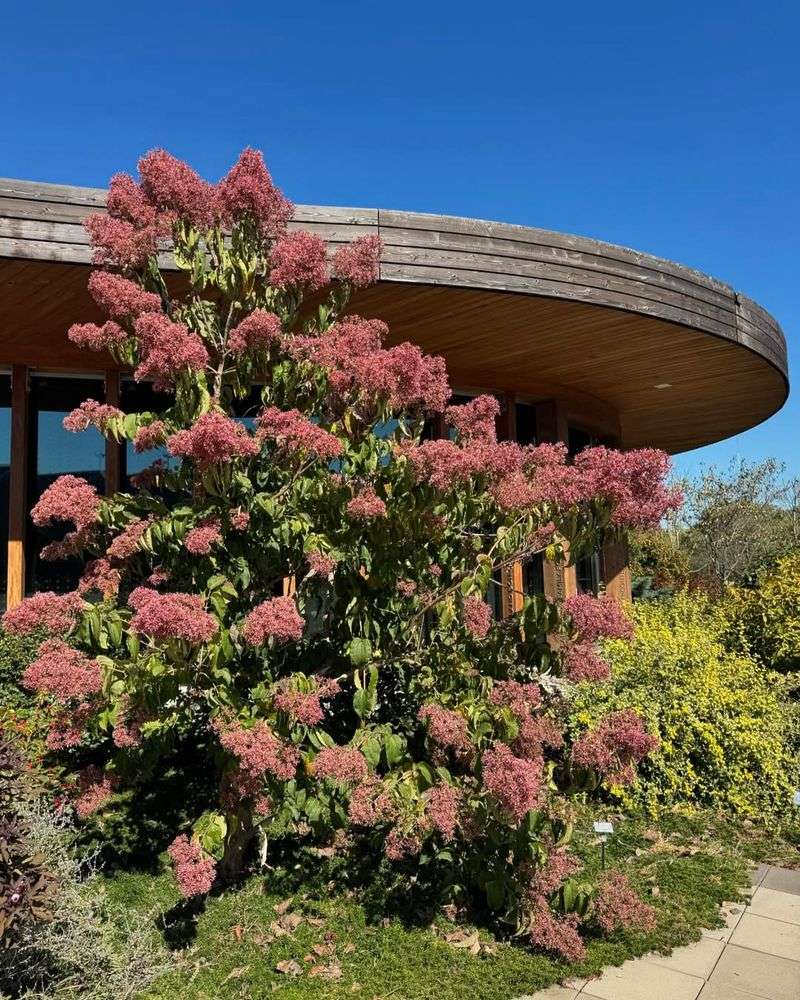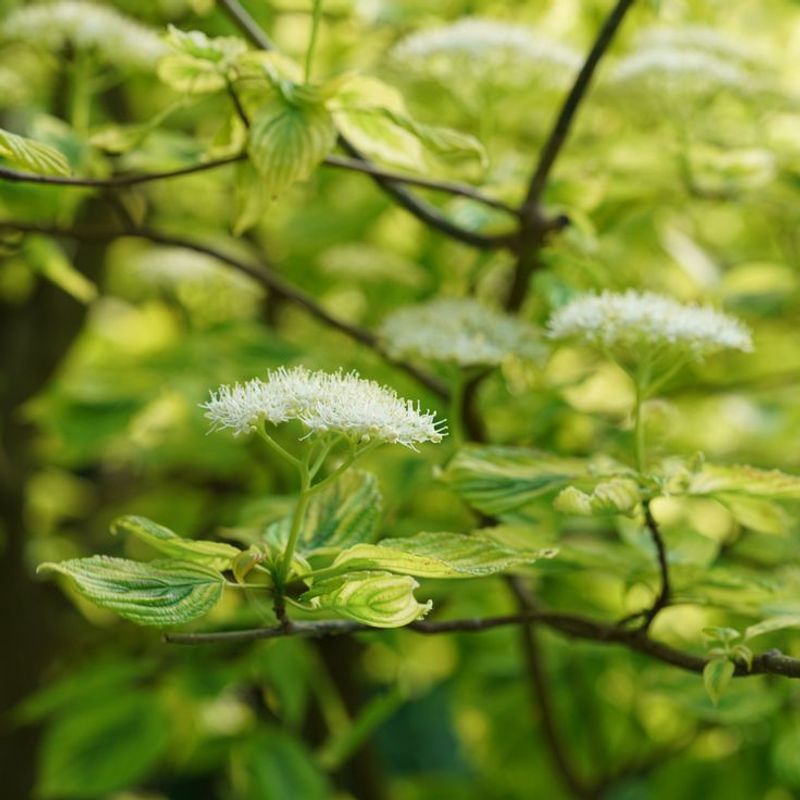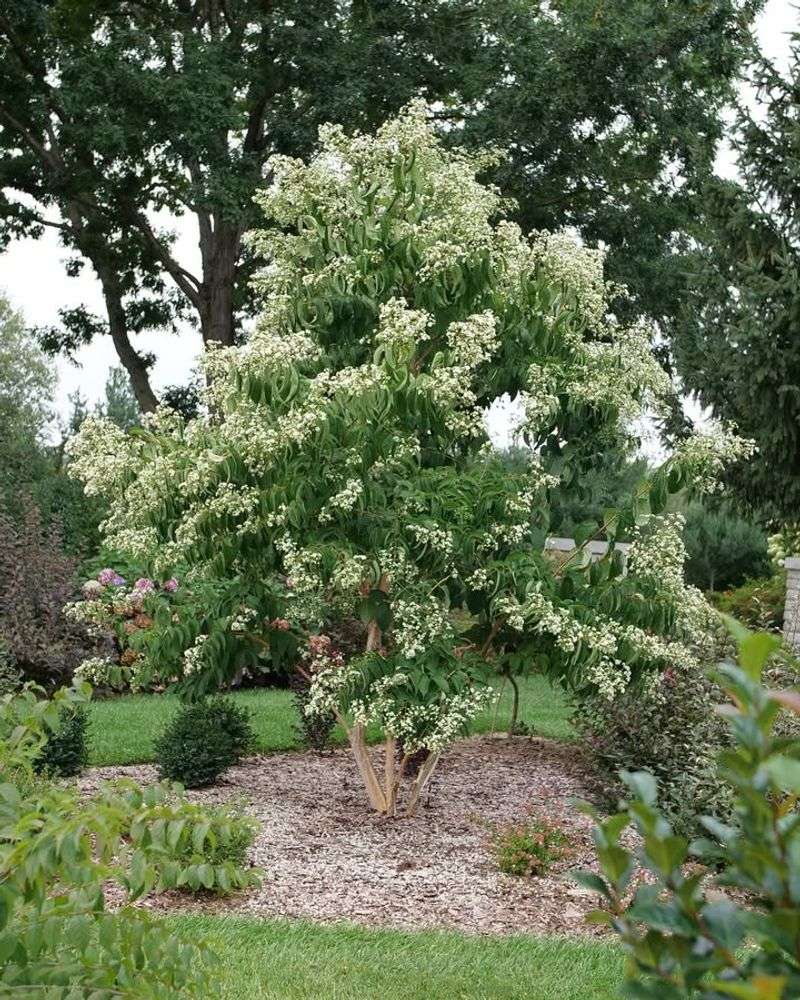Imagine a tree that transforms your backyard into a buzzing paradise for bees and butterflies every autumn. The Seven Sons Tree does exactly that, creating a stunning display of flowers when most other plants have finished blooming.
Native to China but perfectly suited for West Virginia gardens, this remarkable tree offers beauty and environmental benefits that make it a gardener’s dream come true.
1. Late-Season Blooms Feed Hungry Pollinators
Most flowering plants wrap up their show by late summer, leaving pollinators scrambling for food sources. Seven Sons Tree breaks this pattern by producing clusters of creamy white flowers from August through October in West Virginia.
Bees, butterflies, and hummingbirds flock to these blooms like kids to an ice cream truck. The timing couldn’t be better since pollinators need energy reserves before winter arrives.
Planting one creates a vital food station during a critical season.
2. Colorful Calyxes Provide Extended Visual Interest
After the white flowers fade, something magical happens that many West Virginia gardeners don’t expect. The star-shaped calyxes surrounding the seed pods turn brilliant shades of pink and red, creating a second wave of color.
Picture tiny pink stars decorating your tree from September through November. The contrast against autumn leaves makes your yard look like a painting.
Even neighbors who’ve never heard of this tree will stop to ask questions about it.
3. Compact Size Fits Small West Virginia Properties
Not everyone has acres of land for giant shade trees. Seven Sons Tree typically grows 15 to 20 feet tall with a similar spread, making it perfect for cozy yards.
You can plant it near patios, along driveways, or as a focal point in garden beds without worrying about it overtaking everything. The rounded, manageable shape means less pruning work for you.
It’s like getting a full-sized tree experience in a space-saving package.
4. Thrives In West Virginia’s Climate Conditions
West Virginia’s unpredictable weather can challenge many ornamental trees, but Seven Sons Tree handles it like a champion. Hardy in zones 5 through 9, it tolerates both cold winters and hot summers with ease.
The tree adapts to various soil types and doesn’t demand constant attention. Once established, it handles drought periods reasonably well.
Gardeners appreciate plants that survive without babysitting, and this one delivers reliability beautifully.
5. Low Maintenance Requirements Save Time And Effort
Busy homeowners need plants that don’t require weekend-long maintenance sessions. Seven Sons Tree rarely suffers from serious pest problems or diseases that plague other ornamentals.
You won’t spend hours spraying chemicals or dealing with leaf spot issues. Pruning needs are minimal—just remove diseased branches occasionally to maintain its natural shape.
More time enjoying your yard and less time working in it sounds like a winning combination to most people.
6. Fragrant Flowers Create Pleasant Outdoor Atmosphere
Gardens should appeal to all your senses, not just your eyes. The white blooms produce a sweet, honey-like fragrance that drifts across your West Virginia property on warm September evenings.
Sitting outside becomes even more enjoyable when pleasant scents surround you naturally. The aroma attracts pollinators while making your outdoor spaces feel more inviting for family gatherings.
Fragrance adds an invisible layer of beauty that photographs can never capture fully.
7. Supports Local Ecosystem And Biodiversity
Every plant you choose affects the local wildlife community in your area. By providing late-season nectar, Seven Sons Tree supports struggling pollinator populations that face habitat loss.
Healthy pollinator populations mean better vegetable gardens and more productive fruit trees nearby. Creating habitat doesn’t require acres of wilderness—just thoughtful plant choices in your own backyard.
One tree genuinely makes a measurable difference in supporting biodiversity around your home.

